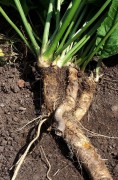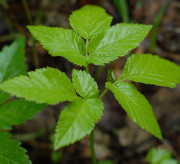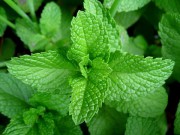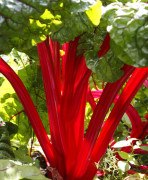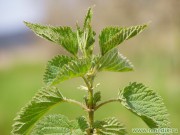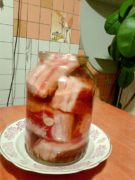Horseradish root: beneficial properties and recipes for storing horseradish for the winter at home.
Horseradish is a herbaceous plant from the cabbage genus. Its beneficial properties allow you to use all its parts: roots, stems and leaves. The plant is indispensable for pickling and pickling cucumbers, tomatoes, mushrooms, and apples. And the roots are also used to prepare seasonings, sauces and medicines in folk and official medicine.
Horseradish roots contain 150-250 mg of vitamin C, which is 5 times more than in lemons and oranges, and up to 7% carbohydrates, essential oils, phytoncides and mineral salts.
An infusion of horseradish roots is used in folk medicine as a diuretic if stones are found in the bladder. For sore joints, apply horseradish paste to the places where it hurts. You can’t keep horseradish or mustard on your skin for a long time - you can get burned. Horseradish has an antimicrobial effect, therefore, diluted horseradish juice should be used to gargle for various inflammatory diseases of the mouth and nose, including sore throat. Horseradish contains a protein - lysozyme, which has a bactericidal effect and is used in official medicine. Horseradish root gruel is good for purulent wounds and ulcers.

Horseradish root is also used in cosmetology. A water infusion removes age spots and freckles, and a mask of horseradish roots and apples, grated equally, reduces enlarged facial pores.
But most of all, horseradish is used in cooking as a seasoning. Horseradish roots are used to prepare a spicy seasoning for meat and fish dishes and salads.In small doses, it improves intestinal function, killing harmful microbes, increases appetite, and helps digest protein foods.
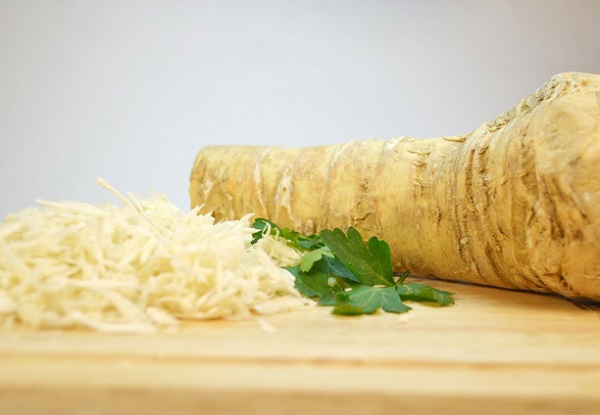
Horseradish seasoning is served with cold fish dishes (whole boiled fish, jellied fish, whole fish), hot smoked fish (stellate sturgeon, sturgeon) and even kulebyaks and pies with fish, if they were not eaten hot and remained for the next day.
In addition to fish dishes, horseradish seasoning also goes well with cold meat dishes, especially pork (jelly, jellied pig, jellied pig), tongue and offal. According to ancient tradition in Rus', pork dishes were eaten on New Year's Eve, which lasted until Vodokreshch (January 19). And on Vasilyev's Day (Old New Year - January 14), a pig's head was usually boiled, accompanied by horseradish seasoning.
Horseradish seasoning is also suitable for poultry aspic, cold boiled beef, veal and beef offal. But it doesn’t go well with lamb.
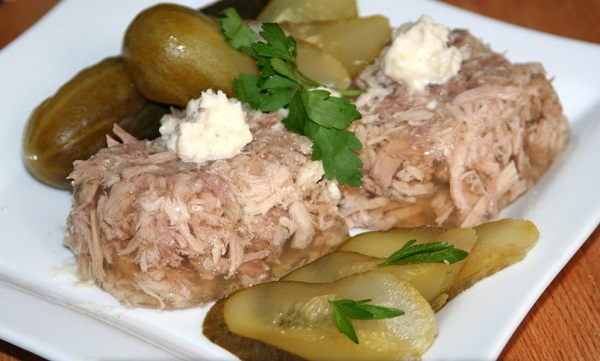
It is customary to prepare horseradish seasoning before use and you should try not to leave it for more than 1-2 days so that it does not lose its spicy-spicy taste. This is due to the fact that after 2 days or more, horseradish greatly loses its strength.
In Rus', horseradish seasoning was prepared without vinegar; it was believed that it reduced the power of horseradish, and besides, vinegar was not used in national Russian dishes.

A vinegar-based horseradish seasoning called “Polish Horseradish” was prepared in Belarus and Volyn, and is especially popular in Lithuania. This recipe came from Lithuania. The seasoning according to this recipe could be stored from 2 weeks to a month, and could withstand long-term transportation, but, of course, the taste was no longer the same.
Russian horseradish seasoning initially has a specific soft, delicate, sweet taste, which unexpectedly turns into an extremely strong, sharp, piquant sensation in the mouth. This is an extraordinary seasoning. It is prepared before serving. The seasoning keeps its strength for 4-6 hours.
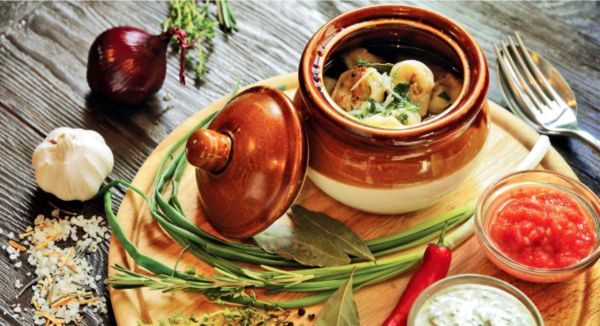
Previously, horseradish seasoning played several roles in Russian feasts: purely culinary - the seasoning made dishes unusually attractive and entertaining - it gave a reason to joke and have fun at the table. This was especially true for those people who tried horseradish seasoning for the first time or did not know the secret of its use. And the secret was simple: the seasoning should be added to the mouth after a piece of fish or meat, chewing it lightly, and not swallowing, as some people did who did not know this secret.
Previously, there was an old custom in Rus' - a test for the bride and groom, who were treated to dishes in which it was necessary to add horseradish seasoning. Sometimes the groom was refused due to the fact that he could not cope with the task, although he had many other positive qualities.
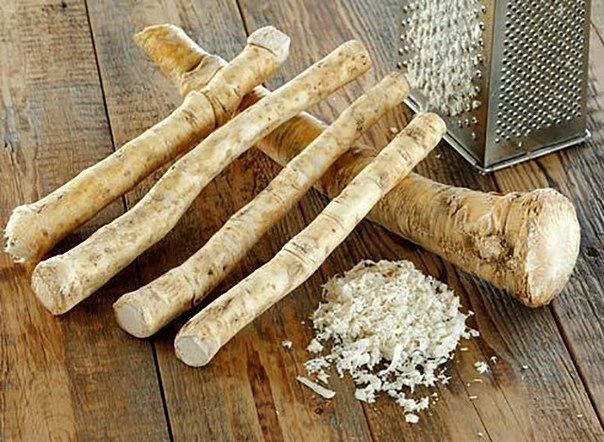
To make the seasoning taste “sweet and evil”, you need to know the secret, without which it is impossible to prepare a spicy and tasty seasoning. The first thing you need is for the horseradish root to be of high quality and good quality. It should be as thick as a finger, juicy, strong and intact inside. We immediately get rid of external damage (rot, bruised and cut areas).
If the root is not juicy, this is an irreparable defect, since it will no longer make a spicy seasoning. Such a root can be soaked to make it easier to chop, but the juices will already remain in the water, and the aroma and pungency will be lost. And, besides, seasoning from such a root is stored even less, no more than 3-4 hours.
Content
Classic Russian horseradish seasoning
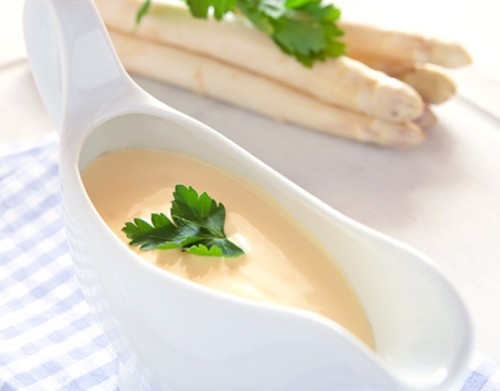
Every housewife should be able to prepare such a seasoning. For this simple recipe you will need:
- several fresh large horseradish roots;
- sugar to taste;
- salt to taste;
- fresh lemon juice – a few teaspoons;
- fat sour cream - added to taste.
How to prepare this horseradish seasoning.
We clean fresh roots with a sharp knife, wash them in cold water and grate them on a fine grater. To prevent the horseradish from running out of steam, take it in three small portions and immediately put it in a well-sealed jar with a small amount of cold boiled water. When all the roots are grated, mix them with water until a thick porridge is obtained. If you use lemon juice, then you need to take less water, since the seasoning should be thick. Add salt and sugar to taste. Before serving, open the jar of seasoning, add sour cream to it, mix and serve along with some meat or fish dish. The strength of the seasoning lasts 10-13 hours.
How to make horseradish sauce
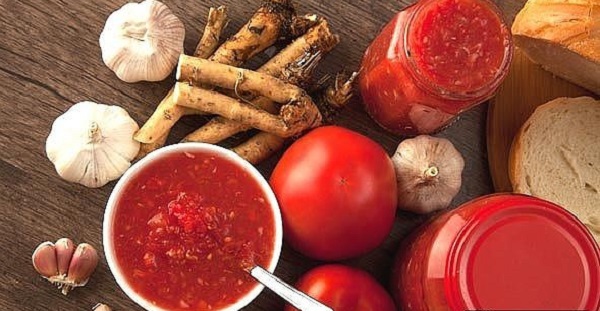
It should be noted that this is a very popular sauce and an excellent preparation for the winter that does not require boiling. To prepare the sauce you will need:
- ripe tomatoes - about 3 kg;
- fresh horseradish root – 250g;
- salt, sugar, ground black pepper - to taste;
- garlic – 250g.
First, we prepare the vegetables: wash, peel and cut off everything unsuitable for food. Then we pass the tomatoes, horseradish and garlic through a meat grinder. The result was a liquid consistency. Add salt, sugar, ground pepper to it to taste. Place the mixture in clean jars, close with tight lids and store in the refrigerator.You can’t store it at room temperature, otherwise the horseradish will sour.
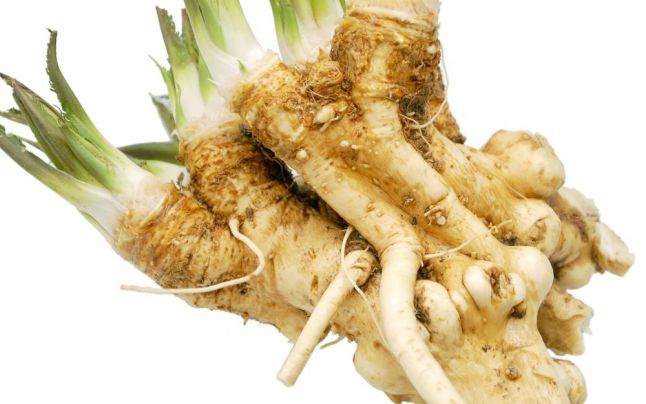
In addition to preparing sauces and seasonings, horseradish roots are also preserved raw. How to properly store it for the winter? For this purpose, after digging up the roots, the tops should be cut off 1-1.5 cm above the root and cleared of soil. Place in boxes in rows so that the roots do not touch each other. Sprinkle the rows with clean, sifted sand without impurities or clay. Once a week, the box with sand and roots needs to be watered a little, so that the sand is slightly damp. In this form, horseradish is well preserved at temperatures close to zero in a damp basement. So, throughout the whole year, the roots will remain juicy and fresh.
For more interesting facts about horseradish, its properties and uses, watch the video:
And one more video, where interesting facts about horseradish are selected, the health benefits and harms and use for treatment are discussed. Watch, eat and be healthy.

